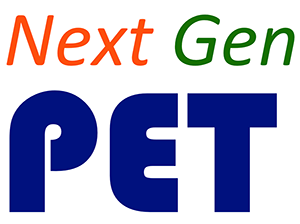Studio Style Class
Introduction
The Studio-style class (SC) version is appropriate if:
- Students can work in groups at tables and perform experiments
- Enrollment is less than approximately 36 students (or larger, if you have an appropriate studio-style classroom and sufficient help to help monitor the class activity)
- The class meets approximately 75 hours/semester, typically in 2.5-hour sessions
- Suitable equipment is available
During each period students work in small groups to make predictions, perform experiments, make sense of their observations, draw conclusions, and share their ideas with the rest of the class (often using white boards). They record observations and answer questions on worksheets. The instructor usually circulates among the groups, addressing questions, and structures the whole class discussions.
You can use the links to the left to find out about many aspects of the studio-style version of the curriculum, including many of the materials for instructors. A full set of instructor materials, including answer keys, test banks, etc. is available from the login (password-protected) portion of this site.
Pedagogy provides a description of the structure of each activity and provides a detailed example.
Equipment and Materials provides a list of equipment and materials needed for each of the activities in the curriculum.
Table of Contents with Time Estimates lists all the activities in the curriculum (organized by module and unit), along with an estimate of how much time each activity might be expected to take.
Content Modules has a drop-down menu with links to each of the five content modules in the curriculum. Choosing a module takes you to a page showing graphic displays of the sequence of activities and homework extensions for each unit in the module. When you click on any of the activities or extensions in these graphics, a panel below opens that provides a brief description of the activity or extension.
Teaching and Learning has a drop-down menu with links to a Table of Contents and the various clusters of Teaching and Learning activities that are associated with the content modules. Each of these links takes you to a page where you can see summaries of the activities and extensions for that cluster. You can download any of these activities or extensions for use with your students. They are free to use as you like.
Planning and Conducting Investigations takes you to a page where you can see summaries of the activities and extensions that are aimed at helping students develop skills for this science practice. You can download any of these activities or extensions for use with your students. They are free to use as you like.
Planning Your Course provides guidelines on how to plan your quarter or semester-long course using Next Gen PET materials.
Hybrid Implementation. If your class format involves both lecture sessions and weekly laboratory meetings in a separate room, then you can consider implementing a hybrid version of the curriculum, using lecture-style materials for the lectures and studio-style materials for the lab periods.
Extension Index takes you to a page where you can link to the homework extensions for each module and unit in the curriculum. Students work through each extension online and then (usually) go to their institutions learning management system to take a quiz.
Demonstration Movies and Simulations takes you to a page where you can link to movies that students view or instructors show during activities, or link to simulations used during some activities. The movies are organized by module, unit, and activity; each activity page contains all the movies for that activity.
Classroom Videos takes you to a page where you can link to the large number of classroom video clips showing students engaged in both small group and whole class discussion. These clips are organized by module, unit, and by lesson; each lesson page contains all the video clips for that lesson.




